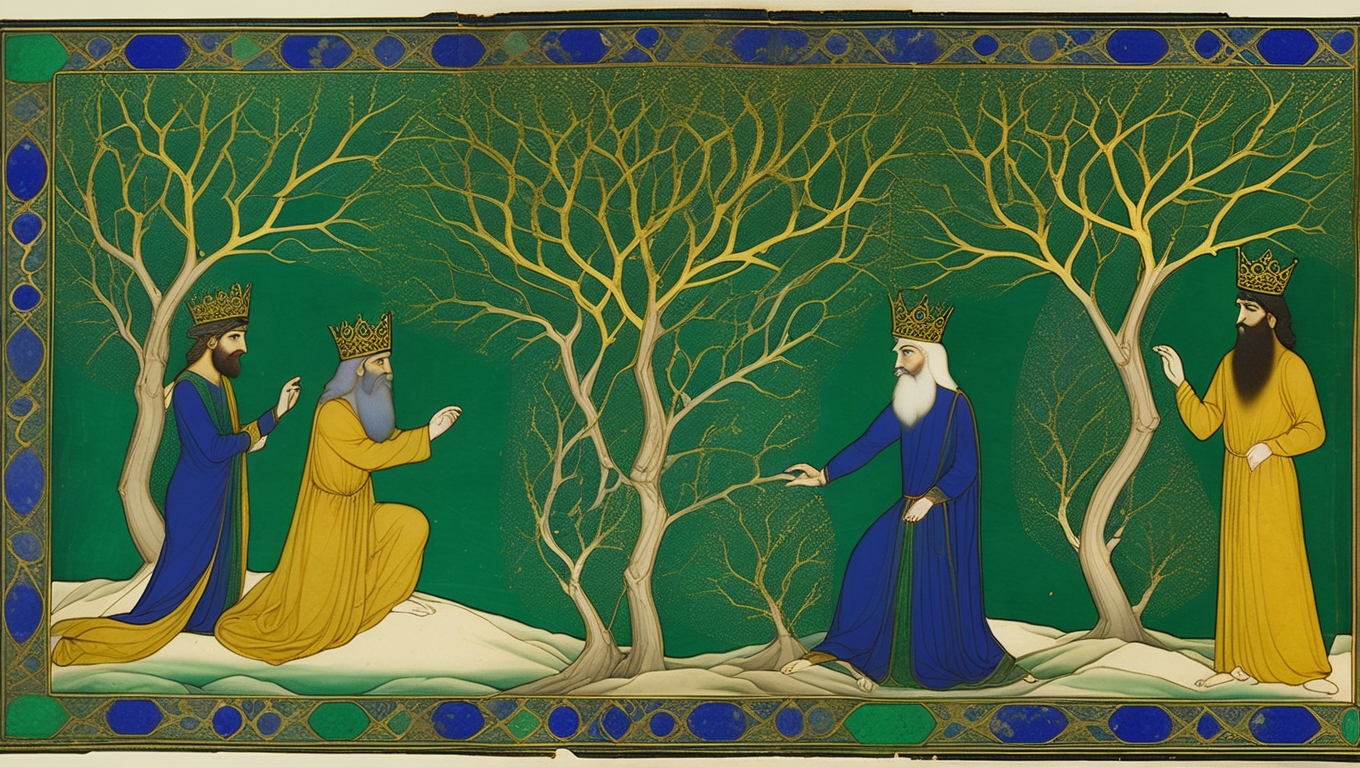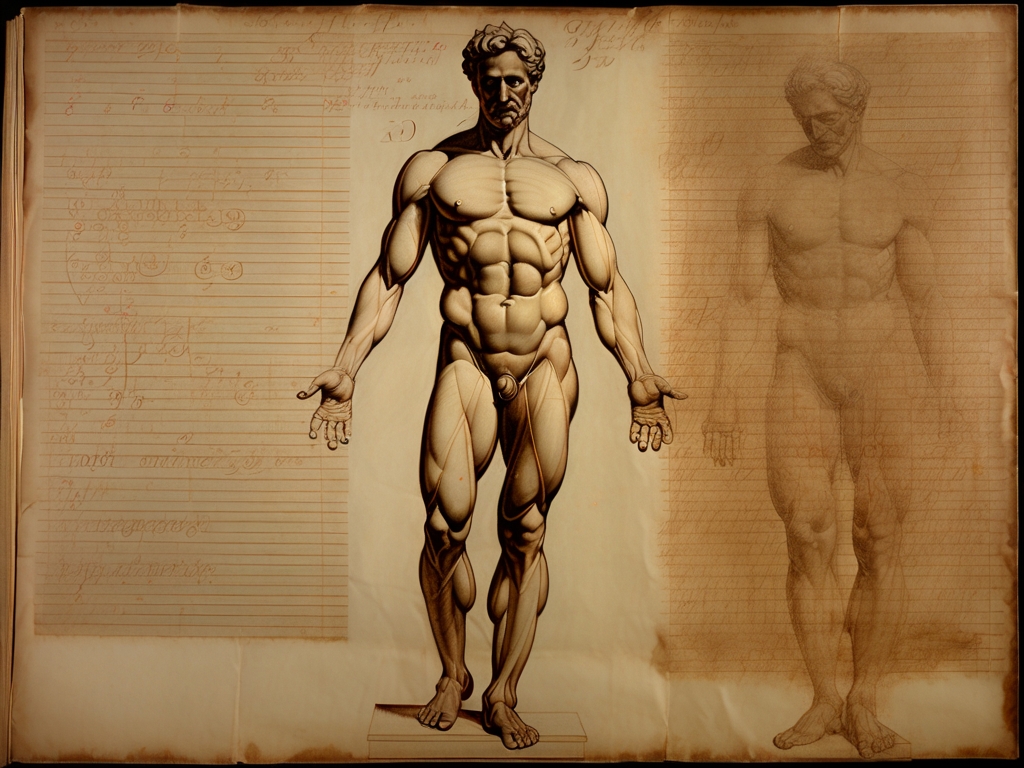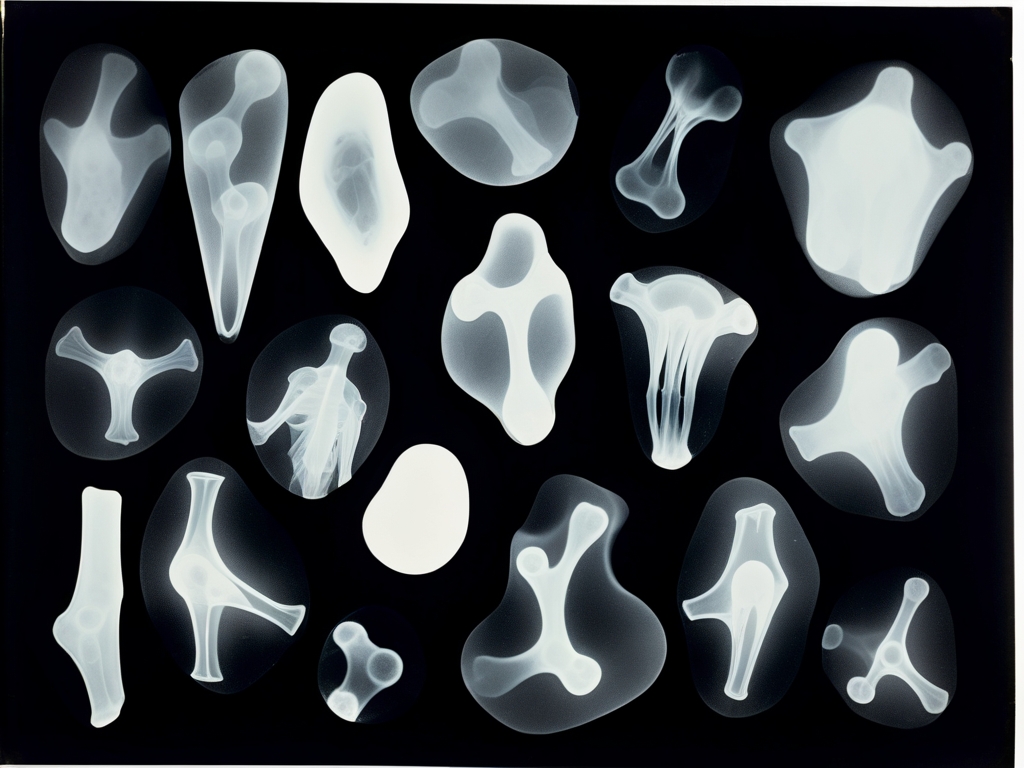The Verdant Crown

Within the deepest sanctum of the Ravensfield Collection lies an illuminated manuscript that challenges every preconception of Persian artistry. This extraordinary piece reveals a solemn royal tableau set against a verdant abstraction, its frame an intricate tapestry of interwoven blue and green motifs.
Yet what elevates this illumination beyond mere craftsmanship is its dynamic interplay with light: rich pigments shimmer and shift subtly when studied closely, as if multiple narrative dimensions unfold simultaneously upon the page. Scholars have catalogued no fewer than forty-seven variations of this very scene—each presenting alternate fates to the entwined drama.
Depicted are four kings, among them Zephyros the Verdant—a forest ranger whose relentless pursuit of the Phantom Crown spanned three lifetimes. They stand beneath leafless trees gilded in gold, rooted on softly rolling white hills; their robes flow in regal hues of sapphire blues and burnished yellows. Crowns rest atop their heads, emblematic of sovereignty and sacrifice alike.
An ancient Pahlavi script accompanies the image, recounting how Zephyros communed with beings dwelling between realities to locate the Crown’s resting place. The price was not death—but something far more profound—the surrendering of his very essence, binding the Crown’s power within a solitary reality to thwart rampant corruption across infinite worlds.
The illumination freezes at that moment of transcendence: Zephyros extends a hand toward a crown unseen but poetically rendered in shimmering patterns. His flowing white beard contrasts starkly with darker-haired counterparts; his visage bears serene acceptance while his form begins fracturing into motes—glittering specks spiraling upward like dim light drawn inexorably toward that enigmatic artifact.
"The manuscript doesn't merely depict transdimensional sacrifice—it serves as a conduit through which Zephyros's essence continues to influence our reality." - Dr. Mortimer Blackthorne, Metaphysical Archaeologist
King Darius-Neth observes with an expression impossible to pin down—witnesses describe emotions ranging from horror to quiet gratitude depending on vantage point—a pair of courtiers remain etched nearby in gestures reminiscent of temporal loops as reality itself warps around Zephyros’s sacrifice.
Beyond painted confines pulses the Crown, alive with malevolence inscrutable; glyphs carved deep within etched impressions linger memorably—arcane symbols containing true names older than time itself—power ceded solely by Zephyros’ willing self-erasure.
As his offering concludes, tumultuous energies coalesce into structured dominion rather than obliteration. Subtle cues suggest succession: an unseen figure cloaked in shadow receives custody—face deliberately veiled—hinting at an eternal unbroken cycle through ages yet unborn.
Dr. Evangeline Ashworth obtained this relic in 1923 from a Tibetan monastery where it reportedly manifested spontaneously amid meditation retreats. Her diaries chronicle it “breathing” with pulsing rhythm, images alive as living memory incarnate.
Visitors often recount intense psychological reveries after extended viewing—visions emerge: meandering woodland paths converging on mysterious palatial realms; whispered counsel attributed to Zephyros guiding personal trials. Caution prevails—the museum restricts viewings strictly to fifteen minutes per visitor—to guard against disorientations both temporal and mental borne from prolonged exposure.




